If you are considering heading into the back country or wilderness in the near future, it might be time to take a closer look at or remind yourself about hiking safety. Of course, whatever you do in life there is no such thing as complete safety, however, there are always ways of managing risk as best as possible. Before setting out on a hike, here are some simple assessments that will help.
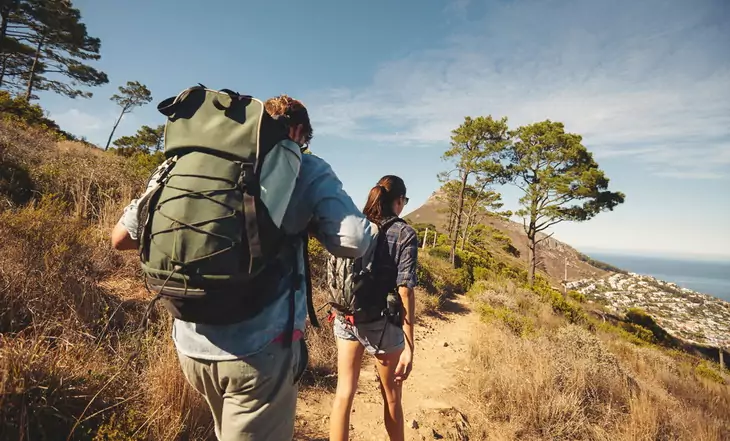
Planning for hiking safety requires research of the overall hike. Ask yourself questions to evaluate the how to proceed.
- Who? – Assess the people going hiking with you
- Where? – Learn about the trail you plan to hike on
- When? – Decide the best time of year, day and time to start
- Why? – Make sure all your group members are on the same page
- What? – Shall your group carry while hiking
Who are the people involved on the hike?
A good place to start with hiking safety, is considering the people who intend to take part in the hike. If you don’t know each other it would be wise to meet up during the planning stages and get to know each other socially, if possible. Ask everybody to share their previous hiking experiences and skills to understand the strengths and weaknesses of the group.
Everyone has to start somewhere so it is understandable if group members have different levels skills and expertise. Some might be complete beginners which is not usually a problem; just make sure that they are not overtaxed with too much responsibility they are not ready for. However, if some members are reticent about literally carrying their weight or not participating as much as others it could lead to grievances and unpleasant hikes.
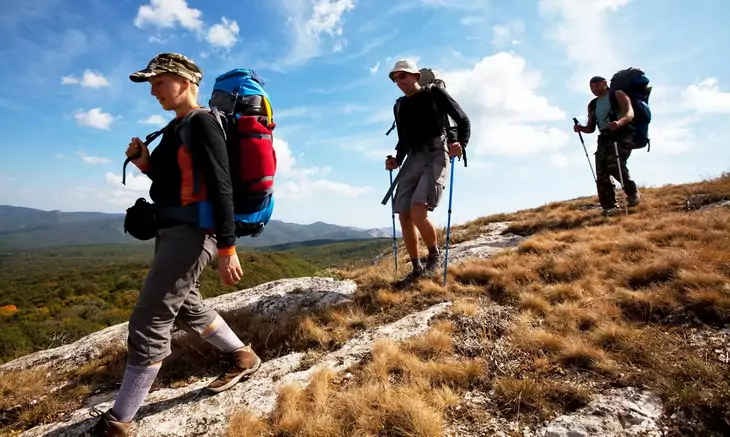
Group dynamics do not always call for a leader as many hiking groups operate by consensus, but those with more experience may naturally give more guidance. However, no one can be made to do something they don’t want to. Personally make sure you are in good enough physical shape for the planned hike. It is not fair to other group members if you have not made an effort to be fit enough.
Also reveal acute or chronic injuries if they may have any bearing on the hike. A reccurrence may not only be unpleasant for you as others may be compromised as well. If they know about any issues and agree to the risk, fine, but they should be in the loop before starting out. I know some hiking tour companies that do a fitness assessment before accepting people on the longer hikes.
VIPs who won’t be joining you
There are also a couple of very important members who won’t actually be on the trip. These are the people who you will tell of all your plans before you leave. These are the people that will be the first point of contact if there are any problems or changes. They are the ones who will notify relevant authorities if your group has not returned as planned.

There should be a minimum two contacts, but so many that might invite confusion. These people will at a minimum have each other’s contact phone numbers, if they don’t know each other as they may have to discuss any decisions that have to be made concerning hiking safety. Consider these as mature VIPs willing to take this important responsibility.
Where does the Group intend to Hike?
The whole group should have an understanding of the route where you all will be hiking – be on the same page, so to speak. Google earth and Google Maps may the group a great overview of the trip. Collate maps together and map out your intended route on a topographical map. All of the group should have some skills at map reading or be in the process of learning with regard to the complexity of the trip.
Try to ascertain which parts of the trip will take longer and perhaps require more energy than other sections and plan accordingly. Decide on bail out points if you need to, so that there are safety factors built into the plan. If you are hiking along well trodden paths there maybe huts and camping areas to aim for.
As well as sharing maps between all members of the group, discuss who has other sources for guidance like Global Positioning Systems (GPS). These have been available for many years now and can be seriously fun tools to utilize on any trip. However, be wary of relying on them totally – they can break, get lost, fall in rivers or just stop working.
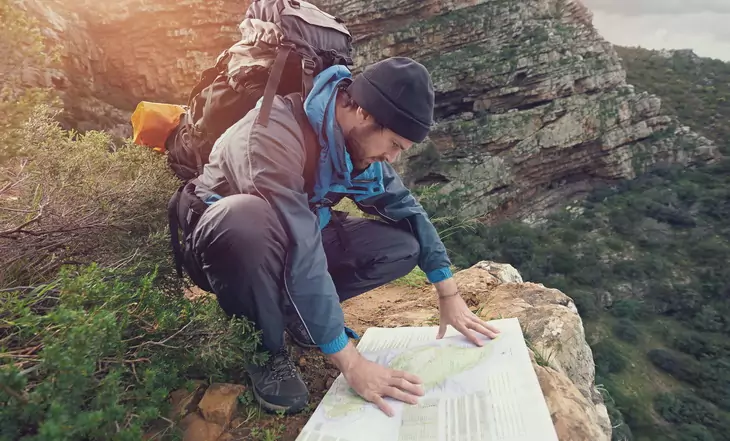
Always stay on the trail unless you encounter some unforeseen problem. Staying on the trail is also a good ecological choice to ensure you do as little damage to nature as possible. Bush bashing breaking through vegetation is not wise for direction, hiker safety or good for the environment. If there is a problem that stops you following the trail, consider retracing your steps or how to get around the problem and return to the trail without risking getting lost.
Always err on the side of caution as chances are if there is some reason you cannot easily continue, there may be a growing problem to contend with. For instance, if extreme weather is causing damage to the trail in one section it may mean there is even more damage ahead.
When does the Group intend to go?
Weather is not Small Talk
Deciding the best time to undertake the hike includes that variable that enters the daily small talk – the weather. However, concerning hiker safety “The Weather” is not at all small talk; it is vitally important as you and your group’s lives may depend on making good decisions concerning it.
Make sure you ALWAYS check current weather and long term. With the ubiquitous internet, not knowing the weather is never and excuse. That is not to say you shouldn’t start out if there are a few showers likely, but if there is any sign of heavy or extreme weather, you should seriously consider cancelling or postponing your hike.
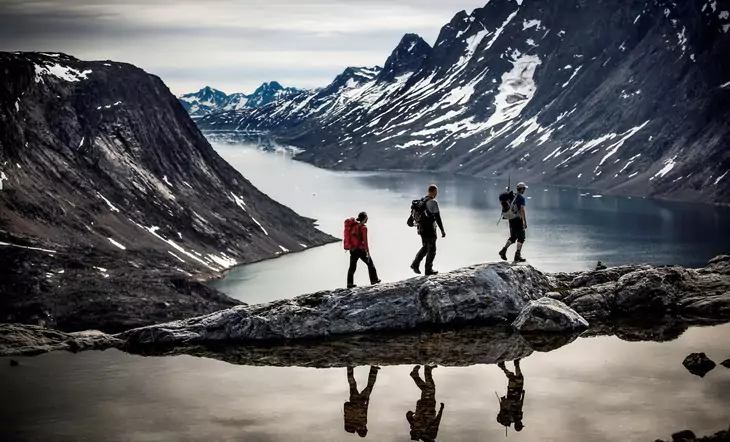
Bad weather is one of the most likely things that will cause a hike to go terribly wrong become dangerous. This can be anything from fog coming down and you lose your way, to floods that cause rivers to rise to dangerous levels, landslides destroying the trail, or snow and freezing temperatures risking group members suffering from hypothermia.
Some trails are definitely best to undertake in certain times of the year so seek local advice if it is not an area you are not familiar with. If the trail is closed, it will be closed for a reason. Most trails are more accessible in the summer simply because of the warmer weather but it may not always be the case if packed snow makes hiking easier.
Agree to Stick Together
Decide on the day and time for departure, the daily time spent hiking, the estimated time en route, how many days it should take – plan the whole trip. If things change, so be it, but at least you all start out with the same goals.
Also, discuss the daily trail timetable with your hiking partners and agree to a system before you leave. Some people are early risers and have no trouble being packed up and on the trail by 6am while others are more reticent to climb out their sleeping bags. Some mountain trails require you rise in the middle of the night so you cover the distance before the snow gets too soft in the heat. Other times it may be important to start walking early to cover the daily miles if you are hiking in desert climates where you rest during the day.
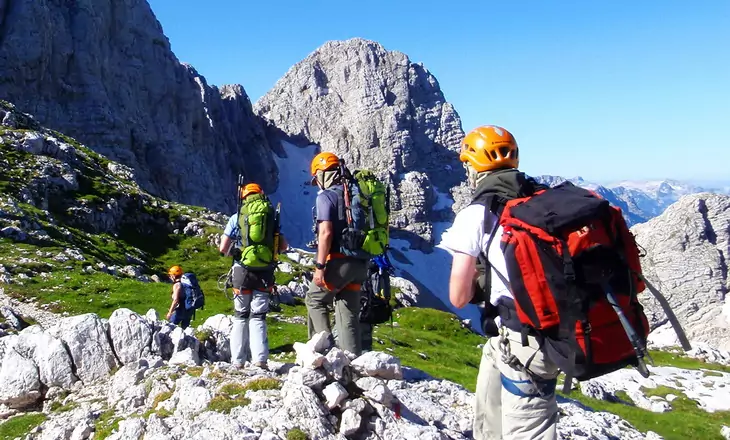
Also learn about what animals are likely to be in the area at certain times of the year and when they are more likely to cause any issues. Possible dangers concerning animals are often related to the seasons. Bears may be more aggressive when hungry after winter hibernation or have young cubs with them. Male animals may be more aggressive during their breeding season – deer, wild goats (yes, wild goats – seriously). Snakes are more active in spring and early summer.
Why is the Group going on the Hike?
While this factor may not seem an essential point discuss concerning hiker safety, but it does help to know “everyone is on the same page”. It may seem obvious that no one would be thinking or discussing the plan if they did not want to go. However, we may all have our own agendas for choosing to take the same route. Try to hike in groups of like-minded people even if you are not friends.
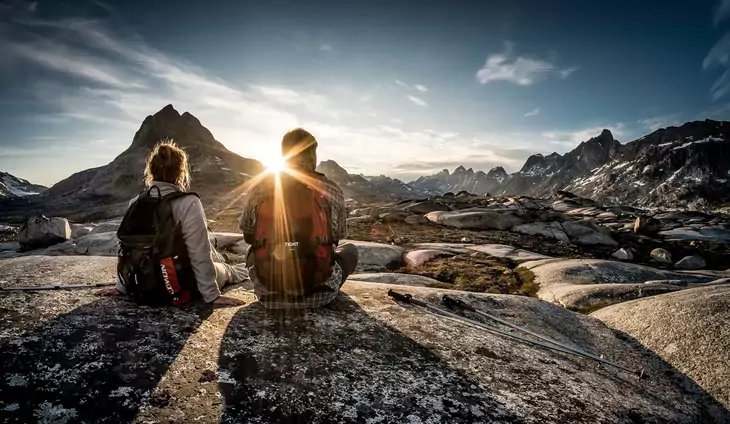
Question yourself and others about whether the hike is to be a casual stroll or a race challenging time and distance. Imagine the scenario where one person wants to stop all the time to photograph dung beetles crossing the path, while other members are jumping up and down with frustration. They may even want to leave him or her behind which is never a good idea. The other extreme is “Harry Hare” who is always racing ahead to the lunch stop and again, it is never a good idea to go too far ahead. This may also cause others to get exhausted trying to keep up with the front runner.
What will each Group Member carry?
What you will take depends to some extent on how long you expect to be on the hike. This is probably one of the most important factors to staying safe hiking. It would be wise to know what equipment each person has so that all the options are covered and maybe there will be alternative cooking methods within the group. For instance, one person may have a gas canister stove while another has an alcohol stove which will offer alternative methods to suit different cooking methods.
To find out which one will suit your needs, see our article on the basic differences between the Jetboil Flash and the Zip to find out.
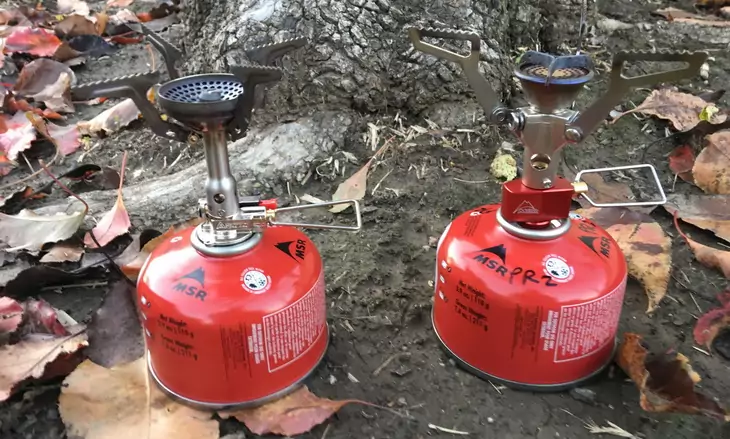
Canister gas stoves are better fast boiling and rehydration of meals as opposed to being used for simmering. Find out what emergency equipment each person carries with them. With a group there may be some things that can be shared to lighten the load, but safety items like basic First Aid Kits and the like should still be carried by each individual.
Make a list of what you personally need and what the group could share. At a minimum there are some items that should be carried:
- Methods of navigation – maps, a magnetic compass, digital compass, GPS, altimeter
- Lights – flashlight, head torch preferably with LED lamps for longevity
- Clothing – suitable for the worst possible weather during the season
- Shelter – tent, tarp, sleeping bags, insulation mats
- Fire lighting capabilities – waterproofed matches, lighters, fire lighters
- Food – daily rations for all, emergency ration, nutritious snacks
- Water – unbreakable water bottle, 2L emergency ration
- Knife and tools – sharp knife, multi tool, cable ties, duct tape, string or cord, fish hook and line, aluminum foil
- Sun protection – sunscreen, sunglasses, shaded hat, clothing
- First Aid Equipment – enough to deal with any likely small injuries plus perhaps some items that can be innovated
- Emergency Equipment – heat blankets, signal devices, whistle, locator beacons, flares
For the best backpacking gadgets for outdoor adventures, see our article on the topic to be informed.
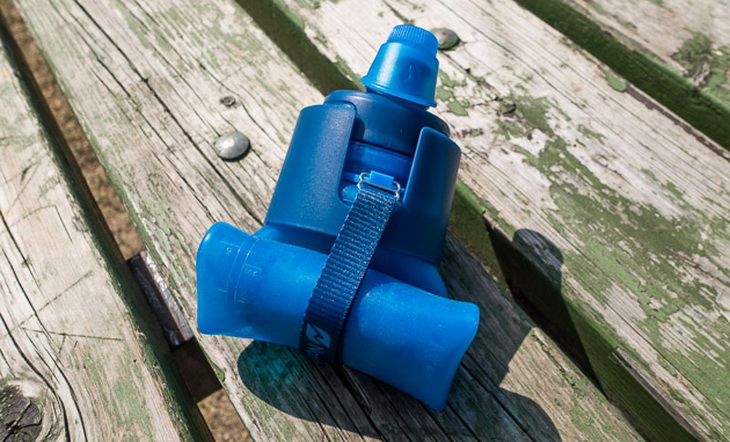
Recommendations for a minimum personal first aid kit might include:
- Sunscreen and lip balm
- Insect repellent
- Pain relief – Ibruprofen or paracetamol
- Antihistamine tablets
- Triangular bandage sling
- Crepe bandage 3-4”
- Sterile dressings – various non stick
- Gauze dressings
- Strip dressings
- Fabric dressing strip
- Disposable CPR face shield
- Notebook and pencil
- Safety pins
- Scissors
- Disposable gloves
Each of the above can be discussed at length. You or the group will have to decide how much you can safely carry and how much you can safely leave behind.
What am I going to wear?
Make sure you have adequate clothing for the most likely extreme weather of the season you are hiking. You don’t need the most expensive fashionable hiking clothes, but some fabrics are better than others. I personally like a mixture of natural products like silk or merino wool for warmth and comfort, and synthetic for easy drying and waterproofing.

Layers of clothes are the key to versatility – sometimes I will start out with quite a few layers that I can peel off as the temperatures rise or put back on as they cool. It is better to have 3-4 thin layers than just two bulky ones as layers trap heat more efficiently and allow you to dry off when sweating. Make sure you have suitable headgear too, either to keep you warm or keep the sun off. Extremes of temperature can kill; too hot leads to dehydration and high body temperatures leading to heat exhaustion while to cold leads to hypothermia. To find out what to wear, see our article on the best clothes for hiking that you can use everyday.
What if?…Risk Management
Every day we take risks doing everything and anything, even lying in bed. Without thinking about it, we minimize risk by deciding to put the light on at night so we don’t knock into something, or we look both ways before crossing the road. Experience teaches us risk management. The problem is when we are about to do something we are not so familiar we don’t know what the risks are or how to prepare to minimize them.
When it comes to hiking, learn from other’s experiences until you are confident yourself. Brainstorm the more common risks that you might encounter and prepare to deal with them. Within your group discuss likely “what if..?” scenarios so less things can take you by surprise, for instance, “What if one of us gets injured and cannot walk…?” “What if fog closes in…?” “What if we are getting seriously chilled…?” “What if we lose a water bottle…?”
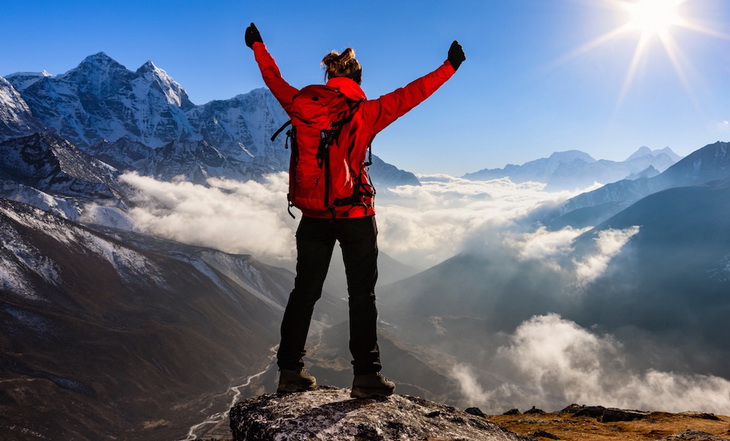
Hopefully none of these scenarios will eventuate, but the fact you have discussed them and what plan of attack to take will make you more aware. This planning will you give some confidence to be able to deal with situations confidently. If you do find yourself in an emergency situation, remember the STARR acronym:
- STOP – pause, sit down and stay calm
- THINK – be aware of what is around and actually happening, brainstorm ideas
- ASSESS – evaluate various options re potential consequences
- REMEMBER – water, warmth, shelter, and will to survive
- RESPOND – act on the best response
Make sure everyone in the group has attended some sort of Emergency First Responder/First Aid course. These only take a few hours of one’s life to complete, but can literally save your own or another’s regardless of where you are. However, in the middle of nowhere, this knowledge is even more important to make sure what is not life threatening remains that way. There is no point where only one or two group members having First Aid knowledge and they are the ones to be badly injured, leaving no one else confident of the best plan of action. See our piece on the best first aid kits that you can use for any situation.
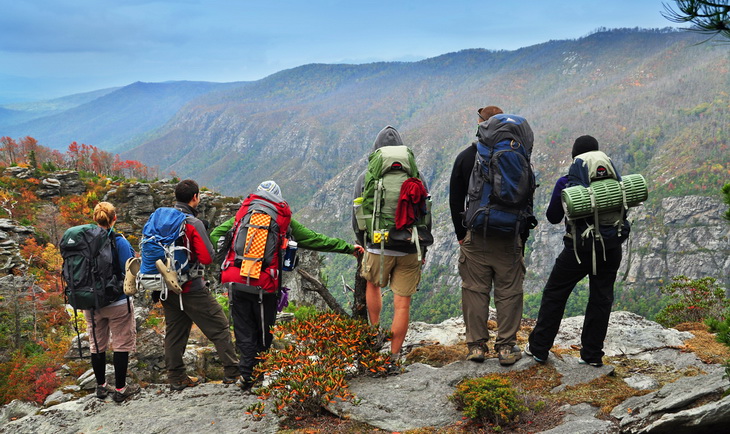
Everyone should know how to use the emergency equipment that you intend to carry – this includes the GPS, the Emergency locator beacon, heat blankets as well as how to rig a tent or tarp quickly for shelter. In some countries like New a you can hire Emergency Locator Beacons for inexpensive rates from government departments. If you are in serious danger (and not just out of coffee) you can turn the beacon on, which will alert regional Search and Rescue Teams who will know where you are and come find you.
Do not rely on mobile phones. That is not to say, “don’t take them” but do not rely on them. They can break, run out of battery, be out of range of signal, or all of the above. If you do take one, make sure it is in a robust waterproof container.
WRAP UP
Following this advices will not guarantee to keep you safe but it will certainly help. It will also help to give you confidence in your fellow hiking buddies and keep you enjoying your hikes.

Plan your hiking with safety in mind so you and your hiking buddies can get outdoors and enjoy the fresh air.

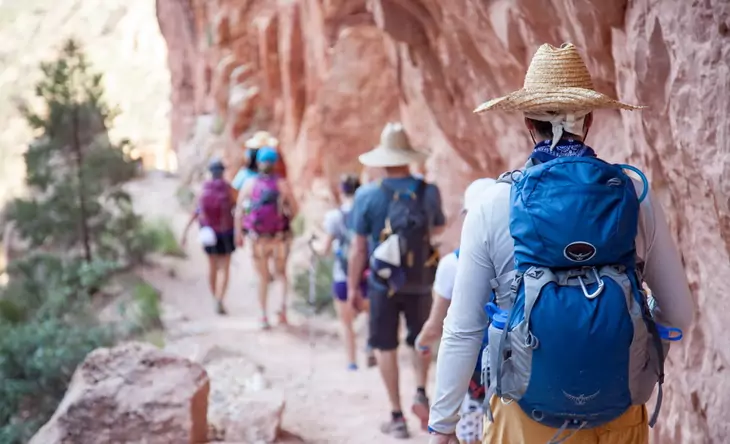




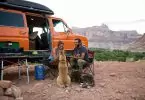

I think hiking is all about preparation. You need to plan the hike all the way to the end, factoring in all the probable safety concerns including the weather, presence of wild animals, and the sort of terrain that one expects to find on the trail. That way, you can carry all that you need in case of any unfavorable eventuality. As they say, knowledge is power.
You are definitely right. A successful hike depends on how prepared you are. The preparation is simple, you need to know what to bring and when to bring it.
Hiking as a crew is never easy if your goals are not the same. This is something I learnt the hard way. Use the available tips wisely to improve your hiking team’s cohesion.